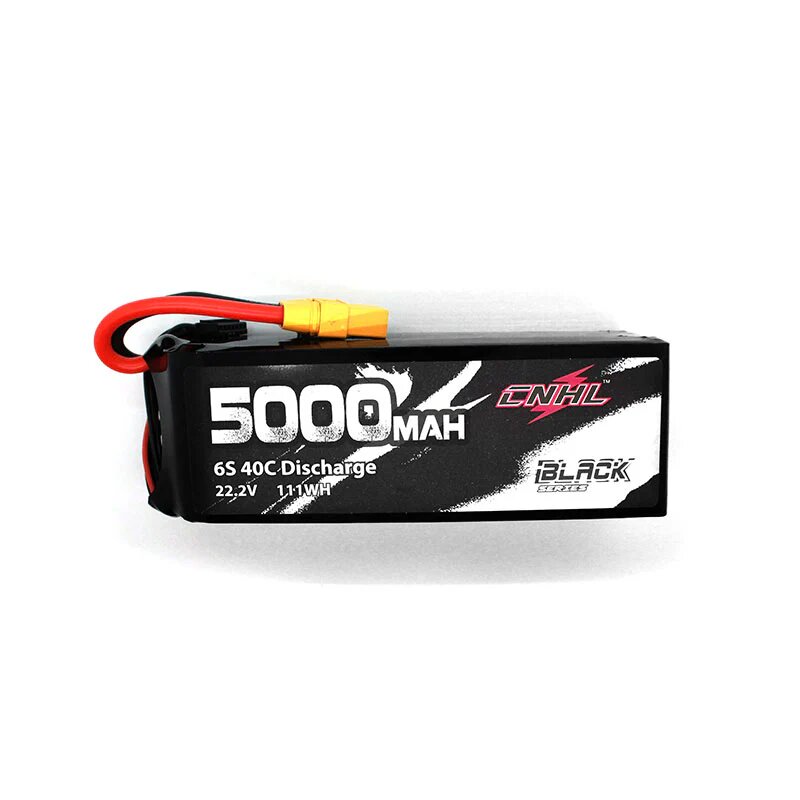Safety is paramount when handling and storing 6S LiPo (Lithium Polymer) batteries, commonly used in RC vehicles, drones, and other high-power applications. LiPo batteries offer high energy density and performance but require proper care to prevent safety hazards such as fire, swelling, or leakage. This guide outlines essential guidelines for safely handling, charging, and storing your 6S LiPo batteries to ensure longevity and minimize risks.
Handling Guidelines
1. Inspect Before Use
- Check for Damage: Before use, inspect the battery for any signs of physical damage, including punctures, tears in the packaging, or swelling. Do not use a damaged battery.
2. Avoid Physical Stress
- Avoid Impact: Handle the battery with care to prevent dropping or impact, which can damage the internal components and lead to safety hazards.
3. Use Proper Connectors
- Correct Polarity: Ensure connectors are properly aligned and connected with correct polarity (positive to positive, negative to negative) to prevent short circuits.
Charging Guidelines
1. Use a LiPo-Safe Charging Bag
- Fireproof Container: Always charge your 6S LiPo battery inside a fireproof LiPo-safe charging bag or container to contain any potential fire hazard in case of battery failure.
2. Monitor Charging
- Never Leave Unattended: Never leave your battery unattended while charging. Monitor the charging process closely for any signs of overheating, smoke, or unusual behavior.
3. Balance Charge
- Use Balance Charging: Always charge your 6S LiPo battery using a charger with a balance charging feature. This ensures that each cell within the battery pack charges evenly, preventing overcharging or undercharging.
4. Charge in a Safe Area
- Fire-Safe Environment: Charge your battery in a well-ventilated area, away from flammable materials and surfaces. Avoid charging on carpeted surfaces or near combustible items.
Storage Guidelines
1. Storage Voltage
- Optimal Storage Voltage: When storing your 6S LiPo battery for an extended period, discharge it to a storage voltage of approximately 3.7 to 3.85 volts per cell. Most LiPo chargers have a storage mode feature for this purpose.
2. Temperature and Environment
- Stable Temperature: Store your LiPo batteries in a cool, dry place, ideally between 20°C to 25°C (68°F to 77°F). Avoid storing in extreme temperatures or direct sunlight, as heat can accelerate battery degradation.
3. Avoid Long-Term Discharge
- Prevent Self-Discharge: LiPo batteries should not be stored fully discharged. Regularly check and recharge them to maintain optimal storage voltage and prevent irreversible damage.
Safety Precautions
1. Dispose of Expired Batteries Properly
- Recycling Centers: When a LiPo battery reaches the end of its lifespan or shows signs of significant wear, dispose of it according to local regulations. Many recycling centers accept LiPo batteries for safe disposal.
2. Emergency Response
- Fire Safety: In case of battery swelling, smoke, or fire, handle the battery with caution. Use a fire extinguisher suitable for lithium fires (Class D) or smother the flames with sand or a fireproof blanket.
Conclusion
By following these essential safety guidelines for handling, charging, and storing your 6S LiPo batteries, you can minimize risks and ensure their longevity and performance. Proper handling practices, such as inspecting for damage, using fireproof charging bags, and storing at optimal voltage and temperature, are critical for maintaining safety and maximizing the lifespan of your batteries. Prioritize safety precautions at all times to enjoy reliable and safe operation of your RC vehicles, drones, or other devices powered by 6S LiPo batteries.

